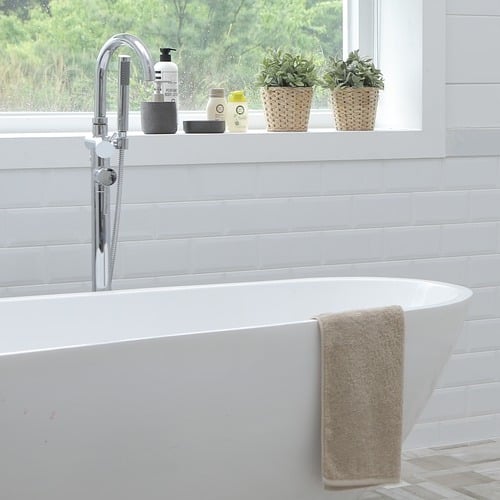Waterproofing methods used in buildings or homes is important and mandatory. It “acts” as a barrier over the surfaces of structures and foundations, roofs, walls, and other parts of a building to prevent any water from penetrating through these surfaces. While water resistant materials “limits” and “controls” water seepage, waterproof materials blocks off water seepage entirely.
The most commonly used waterproofing materials are liquid waterproofing membrane, polyurethane material and cementitious material. Waterproofing in buildings and homes are usually required, such as areas like bathrooms, balconies, swimming pools, green roofs, roofs and even kitchen.
Liquid applied waterproofing membrane (LAM), is a high quality moisture curing elastomeric waterproofing and sealant that is helps to fill, seal and level grout lines, voids, seams and surface damage on construction materials prior to application of liquid waterproofing. It bonds to green concrete and it sets pretty quickly – up to two coats in one day and may be used in confined spaces.
High pressure PU (polyurethane) injection grouting is an injection of liquid grouting material into the structure under pressure. During the grouting process, fissures (an opening or line of breakage made by cracking or splitting in structures) and pores are filled with the grouting material, which subsequently hardens and connects the disintegrated surfaces. PU injection grouting can help to fill the cracks fully as once the injection is administered; the foam expands to fill in the entire space of each crack. This fullness gives full coverage and protection from any water seepage. Another advantage of PU injection grouting is that the atmosphere’s moisture content does not matter. The foam can be injected into wet areas, which means you do not have to wait till the leakage area is completely dry before taking action against further water damage. Not to mention PU injection grouting remains flexible too.
As suggested by the name of the method itself, cementitious waterproofing basically uses cement. This method entails the application of concrete-based solution. Cementitious treatment provides sufficient protection to the surfaces by repelling water and prevents leakages. Cementitious waterproofing is affordable too.
Other material such as waterproof grout, which is a mixture of cement concrete with waterproof solution helps to fill gaps between pipe inserts into concrete or masonry walls and tiles. It is a fast setting material that can provide a long lasting watertight seal. There is also the waterproof sealant, which can be applied to the edges and corners of sinks, bathtubs, windows or balconies. However extra sealant has to be applied to windows and balconies as water tend to retain in such areas. Aside from waterproof grout and sealant, there is also primer, which helps to add protection after tiling and plastering of surface. The dry up time usually takes up to 4 to 5 hours.
Of course, the above-mentioned are just a few out of the many techniques that are available out there. Whenever faced with a water leakage, it is important to find the right contractor, someone who is experienced and trustworthy. It is very important that the person you have engaged can understand and interpret the needs and requirements to the problem. If you are currently experiencing a water leakage problem at home, do not hesitate to give us a call at +65 8754 4058 today!



